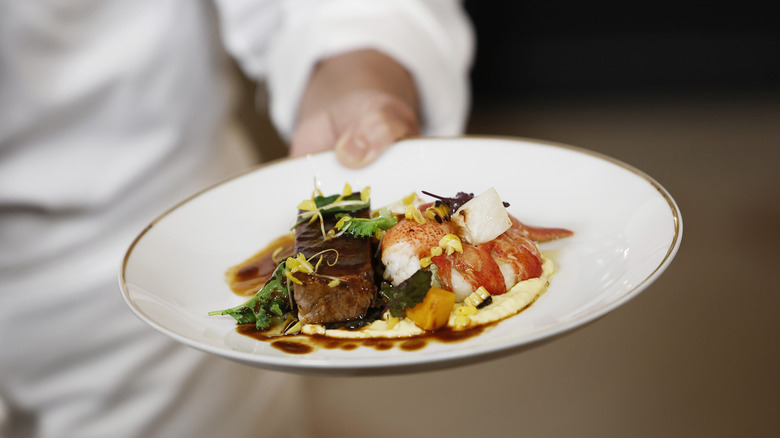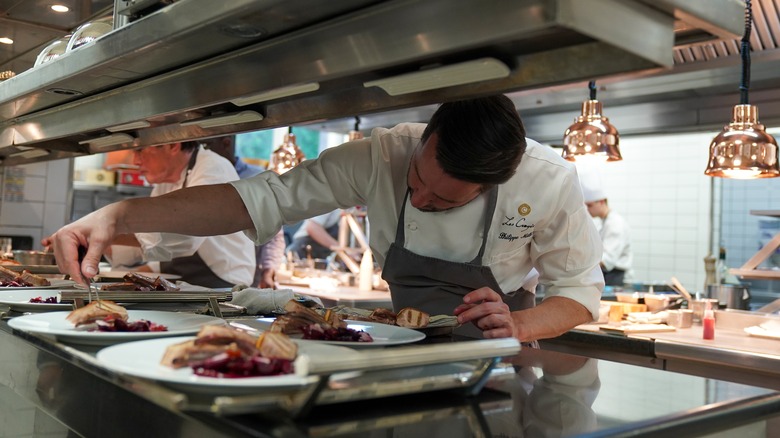What, Exactly, Do CDC Chefs Do In Restaurants?
When you see the acronym CDC, you might first think of the Centers for Disease Control and Prevention, but in the restaurant world, it refers to the chef de cuisine of a kitchen. Perhaps you've seen this term on a menu (or heard it during a stressful episode of "The Bear") and wondered what a person in that role does. Chef de cuisine literally means "chef of the food." While an executive chef oversees many restaurants, a chef de cuisine's purview is much more localized.
Unlike an executive chef, who may be bouncing around to different locations — picture someone like Bobby Flay with an empire of restaurants — the CDC is responsible for a single kitchen and virtually everything that happens there. The chef de cuisine oversees the individual restaurant's menu and is responsible for every plate that leaves the kitchen. That doesn't mean they physically assemble every dish, but they are supervising the ingredients, cooking, and presentation of each plate to ensure that the sous chef, line cooks, and everyone else in the back of house are keeping things up to standard.
What doesn't the chef de cuisine do?
The role of chef de cuisine is part of the kitchen brigade system. It was started in the late 1800s by French chef August Escoffier, who implemented it based on his time in the military. The hierarchical system delegates specific responsibilities to certain roles to help maintain an efficient back of house. In reality, there's very little a CDC doesn't do in a kitchen, at least on occasion, but their primary role can be likened to that of a coach.
In addition to overseeing all of the food during service, the CDC manages the back-of-house staff schedule, tastes the food during prep to ensure everything is being made correctly, and maintains the restaurant's inventory. While doing all of this, they are teaching the staff the tricks of the trade: what to taste for in a certain dish to create a balance of flavors, how to butcher meat correctly, and the keys to beautiful plating presentation, for example. This helps the kitchen run smoothly, even at the busiest of times, keeping the food delicious, consistent, and something the CDC can be proud of. For anyone who has ever worked in a restaurant, it's the CDC's world; we're just cooking in it.

